
Celeste deposited $10,000 into a savings account that pays 2.8% compounded monthly. The equation below represents the amount of money, A, Celeste will have in t years.

Celeste wants to know how many years will it take her to earn $1,000 in interest.
Step 1: Enter equation into [Y=].
Step 2: Since Y represents the amount of money in her account, enter the amount Celeste will have when she earns $1000 into Y2. (That amount will be the original deposit of $10,000 plus the $1,000 in interest.)
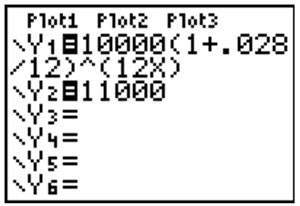
Step 3:
[Window] Reset window to fit domain and range for this problem situation.
What would be a reasonable domain and range for this problem? Explain.
X min = 0 The minimum number of years that money can be invested is 0.
X max = 6 This is only an educated guess. We do not know how many years it will take to earn $1000.
Y min = 10000 This is the minimum amount of money that will be in the account.
Y max = 12000 Choose any number greater than 11000 since this is the amount of money she will need in her account to have earned $1000.
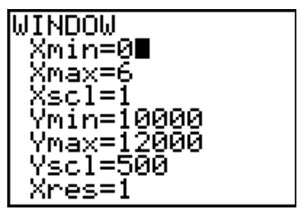

Step 4:[GRAPH] If the intersection of the two functions is not visible, readjust your window by changing the X max.
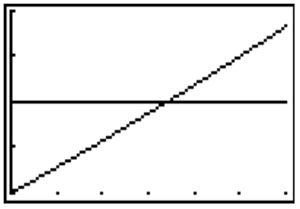
Step 5: To view CALCULATE menu, choose [2nd][TRACE]
Step 6: To find intersection, choose 5:intersect.
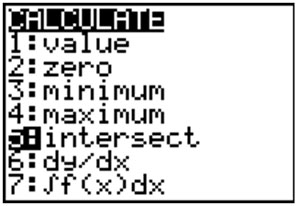
Step 7: When the question "First Curve?" appears on the screen make sure your cursor is on one of the curves and Press [ENTER]. The question "Second curve?" should appear. Check to be sure your cursor is on the other curve. Press [ENTER]. The question "Guess?" should appear. Move your cursor close to the intersection you are trying to find and Press [ENTER].
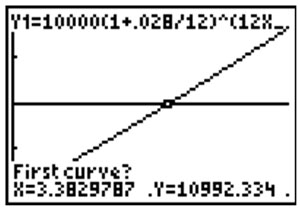
What does this intersection mean?
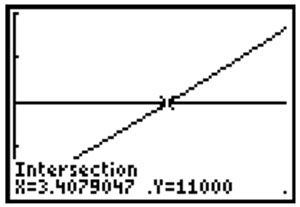
In your notes, compare the table method and the graphing method for solving exponential equations.